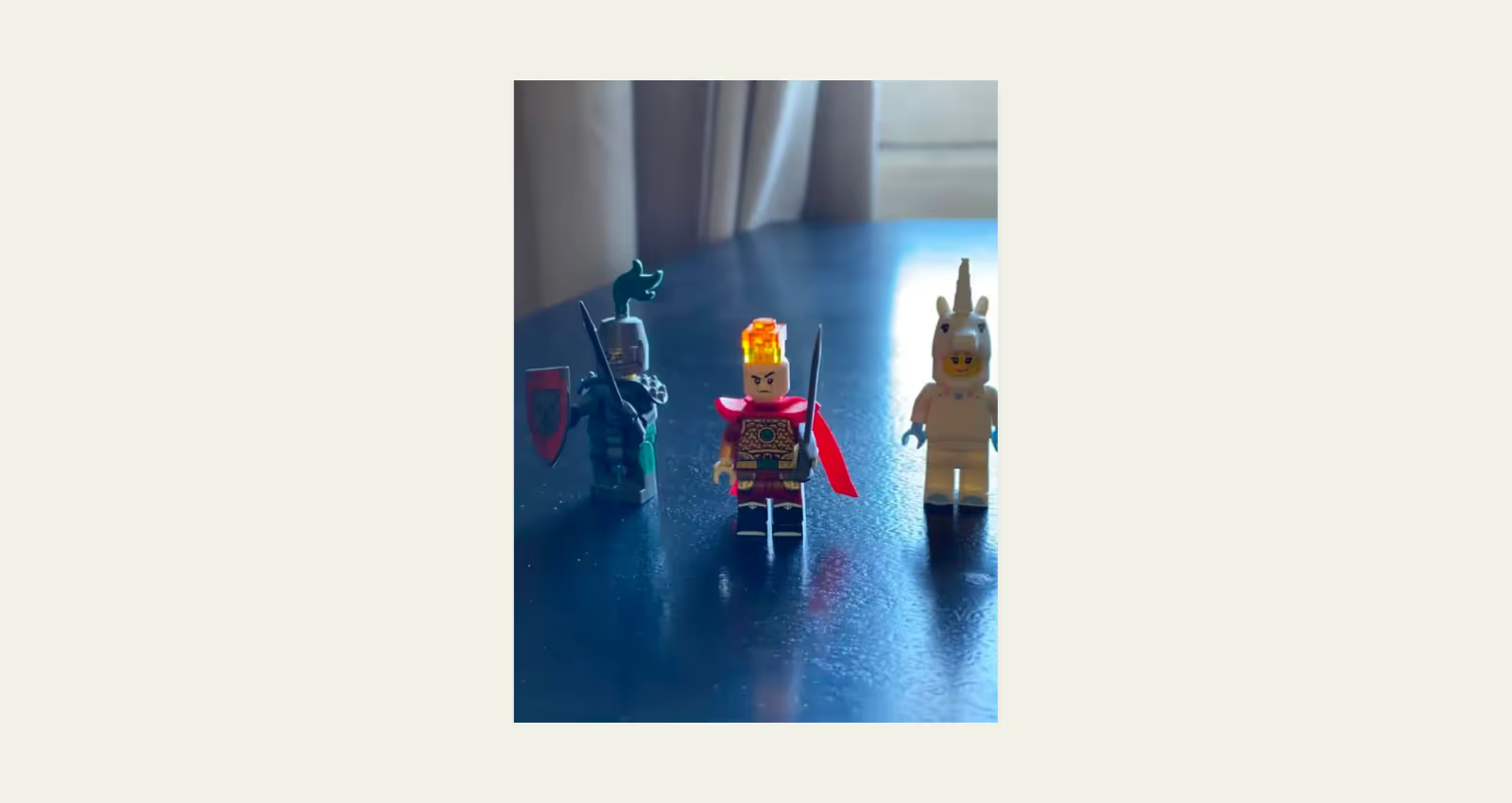Minimum Viable Category Design Part 1
Minimum Viable Category Design Part 1

A practical guide to help founders think product-first, not product-only
📌 Update: after a year I celebrated the guide birthday with its v2. Check this out

The venue: Connect HQ.
The players: Pietro and the founder/CEO of Awesome.io, a Connect portfolio company.
The topic: The future (no big deal).
Pietro — “You found a new problem and built a product to solve it. People love it. If you want to win big, you now have to create a new category.”
Pietro goes to the whiteboard and writes the category design mantra:
Pietro — “The company that designs the new market category is best positioned to dominate it as category king”.
Founder — “ What is a category? Can you define it?
Pietro — A category is the most valuable real estate in the world. A corner of the customer’s mind.
Founder — What? 🤔
Pietro — Exactly! Stay calm and MVCD.
Founder — What!?!? 😱
Pietro — MVCD: Minimum Viable Category Design. It is simple, but not easy. To help founders adopt category design from an early stage, I created a step-by-step guide and a workshop I can lead you through.
This post aims to introduce the concept of Minimum Viable Category Design: an agile variant of the Category Design methodology I adjusted to fit the needs of early-stage startups.
In Part 1, I set out why I believe category design is a fundamental strategy for the most ambitious product founders and how I created a minimum viable approach for our portfolio companies.
In Part 2, I walk through The Four-Step Guide to Minimum Viable Category Design which I sketched to help founders get started with quick time to value. The first three steps are focused on category discovery, category potential and category naming.
In Part 3, the fourth step, I will suggest how to quickly test the new category concept: Product — Category Fit; fake PR; category-proof fundraising pitch.Category Design
Category Design
Wikipedia
Category Design is a business strategy and a discipline that helps companies create, develop, and dominate new categories of products and services. Category design was first proposed in the book Play Bigger
The core thesis is that the greatest companies on the planet didn’t set out to create something better or with more compelling features. They created something entirely new that was completely different from anything that had come before. They intentionally designed and created their own new Category, educated the market, and positioned themselves as Category Kings. The Category King dominates in tech in a way rarely seen in other sectors. There is very little value in second place and no value in third place and beyond.
.avif)
Everything you always wanted to know about category design (but were afraid to ask) is in the book Play Bigger — How Pirates, Dreamers, and Innovators Create and Dominate Markets. More articles and podcasts about the category design discipline are also available in the Media section of the Play Bigger website.
I recommend you read Play Bigger the way I did: Read it. Then read it again! The first reading blew my mind. Boom! It was a revelation. The book beautifully reflected the strategic thinking about innovation I have intuitively, but casually, applied for years. The second time I read it, the ideas in this book inspired me to turn this discipline into action. As I started processing the learning and reflecting on it, I wanted to apply it in my day to day work.
Category Design: my secret weapon for Product Founders
This was the observation that convinced me that category design was the secret weapon I was looking for:
“You can’t build a legendary company without building a legendary category. If you think that having the best product is all it takes to win, you’re going to lose”.
At Connect, we LOVE product. We have formed our investment thesis around backing Product Founders solving large problems by building products that people love.
Product Founders are product-first
- Instinctive about product design. That is the purposeful design of a new product that solves differently the problem that the market needs solved.
- Solve a new problem that consumers don’t know they have. Or offer a new solution to the obvious problem no one thought could be solved.
- Visionary and courageous. They build products that transform the way we live and work, on a massive scale.
Product Founders who think product-only
- Create intuitively a new category but don’t take the next step of actively designing it.
- Instinctively they prioritise Product over Market in the Product-Market fit equation.
- Don’t realise that products are orphans without a category. They miss the fundamental part of conditioning the customers to learn about the problem and demand a solution for it.
- Don’t capture the whole new category potential.
- Are like knights: strong, clever, brave and noble. But without category design hardly any will become kings. They play in someone else’s existing category: even with a new winning different solution, all the efforts simply reinforce the position of the existing category leader.
Product Founders who become category kings
- Embrace Category thinking.
- Learn how to condition the customer’s mind to create a space their product can fill.
- Market the problem, not the product.
- Evangelise their point of view: they make customers see the world in a new way so they will embrace the new solution and reject the old.
- Design a new market category with a clear purpose, to pull the customers who will then make the company its category king.
“The company that designs the new category is best positioned to dominate it as category king” (Play Bigger)
In the spirit of the category king analogy, I created a matrix to represent the heroic innovation journey.
.avif)
As a venture investor — and believer in the power-law — my mission is to help founders to build long-lasting, hyper-successful companies. If product founders can increase their odds of success in the pursuit of world domination by applying the category design discipline, I knew I needed to get our portfolio companies to embrace it.
Introducing …
Minimum Viable Category Design
My first attempts at evangelising Category Design amongst our portfolio didn’t work. I started to enthusiastically recommend reading Play Bigger to our founders. I bought the books and sent them copies. Most founders enjoyed reading the book but, despite being positive about the general theory, in practice, no one actually kicked off the design process.
Lesson learned: despite Play Bigger providing a very detailed how-to guide, the founders felt overwhelmed by the implementation of it and struggled to get started. Constrained by the lack of time, lack of resources, and possibly by the lack of conviction.
How could I help get them started? Connect is a seed-focused firm and relatively young, so most of our portfolio companies are concentrated in the early stages. I figured out that I had to find a suitable way to facilitate the adoption of category design for early-stage startups.
What is the “right” category design approach for early-stage startups?
These are my initial conclusions:
- Category Design core principles are universally valid, whatever the stage of the company (Seed, Growth or Scale-up). The earlier founders can learn and become aware of the power of category design, the better 😉
- It is a foundational, strategic approach to assess the company’s potential, to frame its value proposition and ultimately to create an unfair advantage
- It is not communication or branding. Externally, it is the narrative force that creates demand for your new product and drives the market pull. Internally, it is the true north that guides product development and product expansion.
- There is a minimum viable category design approach that can be achieved without large resources, using an iterative approach, which provides fast time to value and quick feedback loop.
- The strategic planning phase of the design process (problem definition, category discovery and expression) is a simple — albeit not easy — activity, with high ROI.
- The following execution phase (company mobilization, lightning strike, flywheel spin) and the resources behind it are materially influenced by the size and budget of the company.
- Founders would benefit from a practical ‘how-to’ template to get them started and to facilitate their initial Category Design journey.
The work that emerged from these thoughts is the MVCD guide.
The Four-Step Guide to Minimum Viable Category Design
It is framed in a workshop made up of two half-day sessions. It requires some up-front initial preparation and it produces as a deliverable the MVCD table canvas.
.avif)
In the interest of helping others and learning from their feedback, I have published the workshop format in Part 2 and Part 3 of this post.
📌 Update: after a year I celebrated the guide birthday with its v2. Check this out.



